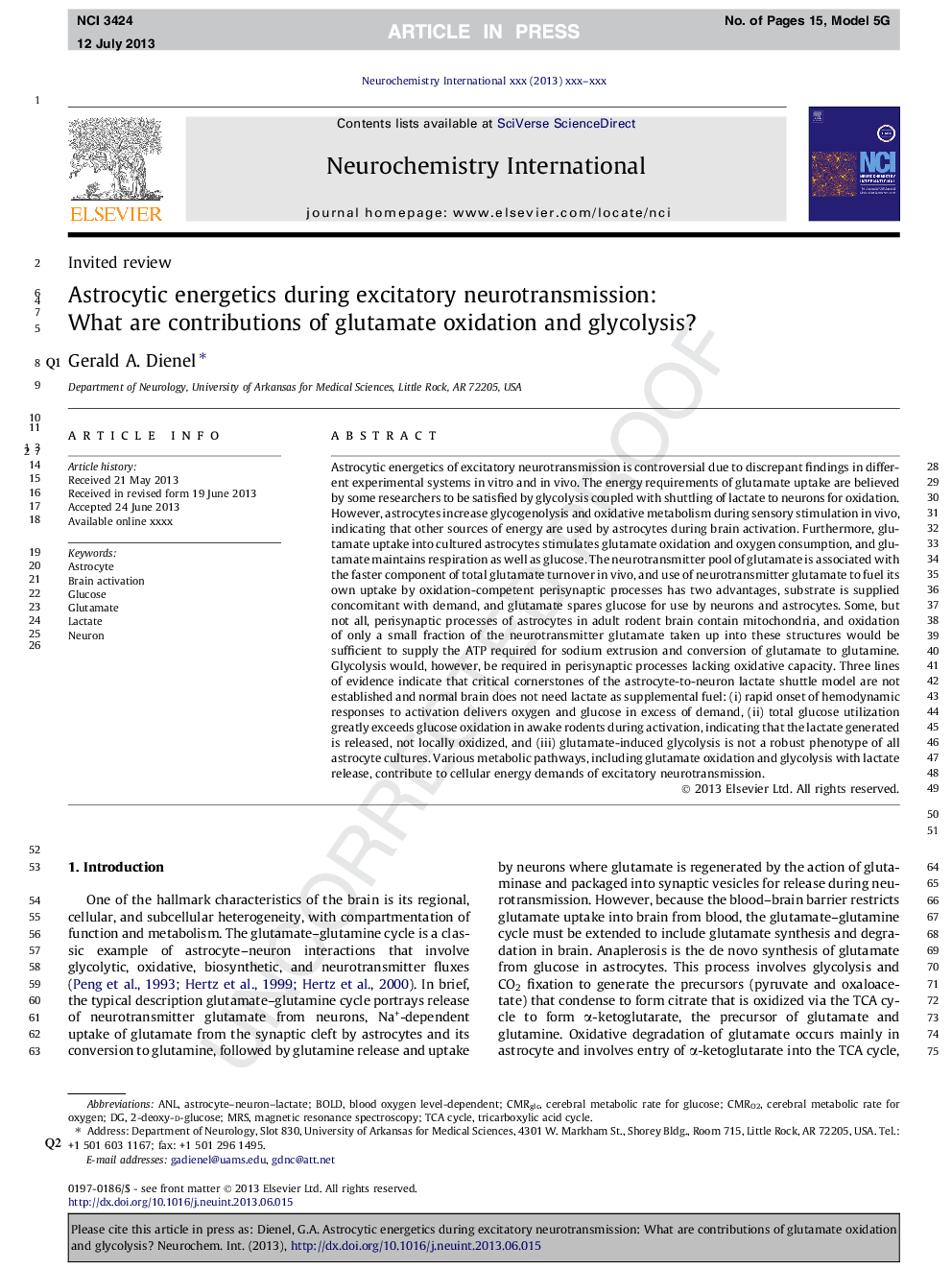| کد مقاله | کد نشریه | سال انتشار | مقاله انگلیسی | نسخه تمام متن |
|---|---|---|---|---|
| 10958191 | 1099977 | 2013 | 15 صفحه PDF | دانلود رایگان |
عنوان انگلیسی مقاله ISI
Astrocytic energetics during excitatory neurotransmission: What are contributions of glutamate oxidation and glycolysis?
ترجمه فارسی عنوان
انرژی آستروسیتیک در طول انتقال عصبی تحریکی: سهیمه اکسیداسیون گلوتامات و گلیکولیز چه هستند؟
دانلود مقاله + سفارش ترجمه
دانلود مقاله ISI انگلیسی
رایگان برای ایرانیان
کلمات کلیدی
ANLCMRO2CMRGlc2-deoxy-d-glucoseMRSBOLDAstrocyte - آستروسیتmagnetic resonance spectroscopy - طیف سنجی رزونانس مغناطیسیBrain activation - فعال سازی مغزLactate - لاکتاتcerebral metabolic rate for glucose - میزان متابولیسم مغزی برای گلوکزCerebral metabolic rate for oxygen - میزان متابولیک مغزی برای اکسیژنNeuron - نورونblood oxygen level-dependent - وابسته به سطح اکسیژن خونTCA cycle - چرخه TCAtricarboxylic acid cycle - چرخه اسید تریکاربوکیلیکglutamate - گلوتاماتGlucose - گلوکز
موضوعات مرتبط
علوم زیستی و بیوفناوری
بیوشیمی، ژنتیک و زیست شناسی مولکولی
بیولوژی سلول
چکیده انگلیسی
Astrocytic energetics of excitatory neurotransmission is controversial due to discrepant findings in different experimental systems in vitro and in vivo. The energy requirements of glutamate uptake are believed by some researchers to be satisfied by glycolysis coupled with shuttling of lactate to neurons for oxidation. However, astrocytes increase glycogenolysis and oxidative metabolism during sensory stimulation in vivo, indicating that other sources of energy are used by astrocytes during brain activation. Furthermore, glutamate uptake into cultured astrocytes stimulates glutamate oxidation and oxygen consumption, and glutamate maintains respiration as well as glucose. The neurotransmitter pool of glutamate is associated with the faster component of total glutamate turnover in vivo, and use of neurotransmitter glutamate to fuel its own uptake by oxidation-competent perisynaptic processes has two advantages, substrate is supplied concomitant with demand, and glutamate spares glucose for use by neurons and astrocytes. Some, but not all, perisynaptic processes of astrocytes in adult rodent brain contain mitochondria, and oxidation of only a small fraction of the neurotransmitter glutamate taken up into these structures would be sufficient to supply the ATP required for sodium extrusion and conversion of glutamate to glutamine. Glycolysis would, however, be required in perisynaptic processes lacking oxidative capacity. Three lines of evidence indicate that critical cornerstones of the astrocyte-to-neuron lactate shuttle model are not established and normal brain does not need lactate as supplemental fuel: (i) rapid onset of hemodynamic responses to activation delivers oxygen and glucose in excess of demand, (ii) total glucose utilization greatly exceeds glucose oxidation in awake rodents during activation, indicating that the lactate generated is released, not locally oxidized, and (iii) glutamate-induced glycolysis is not a robust phenotype of all astrocyte cultures. Various metabolic pathways, including glutamate oxidation and glycolysis with lactate release, contribute to cellular energy demands of excitatory neurotransmission.
ناشر
Database: Elsevier - ScienceDirect (ساینس دایرکت)
Journal: Neurochemistry International - Volume 63, Issue 4, October 2013, Pages 244-258
Journal: Neurochemistry International - Volume 63, Issue 4, October 2013, Pages 244-258
نویسندگان
Gerald A. Dienel,
